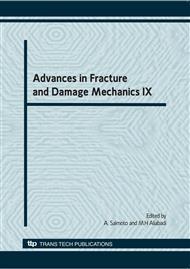p.545
p.549
p.553
p.557
p.561
p.565
p.569
p.573
p.577
Compensation of FSI Analysis to Develop an Alarm System for a Container Crane
Abstract:
This study is conducted to provide a compensation formula to design the stowing devices - a tie-down rod and a stowage pin - and an alarm system to prevent an overturning of a container crane under wind loads. Two method, namely FSI(fluid-structure interaction) analysis and wind tunnel test, are adopted in this investigation. In order to evaluate the effect of wind load on the stability of the crane, 50-ton class container crane widely used in container terminals is adopted for analytic model and 19-values are considered for wind direction as design parameter. First, the wind tunnel test for the reduced scale container crane model is performed according to the wind direction using an Eiffel type atmospheric boundary-layer wind tunnel. Next, FSI analysis for a full-scale container crane is conducted using ANSYS and CFX. Then, the uplift force obtained from FSI analysis is compared with that yielded by the wind tunnel test. Finally, a formula is suggested to compensate the difference between the FSI analysis and the wind tunnel test.
Info:
Periodical:
Pages:
561-564
Citation:
Online since:
November 2010
Authors:
Price:
Сopyright:
© 2011 Trans Tech Publications Ltd. All Rights Reserved
Share:
Citation:


